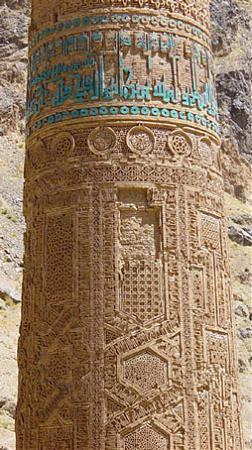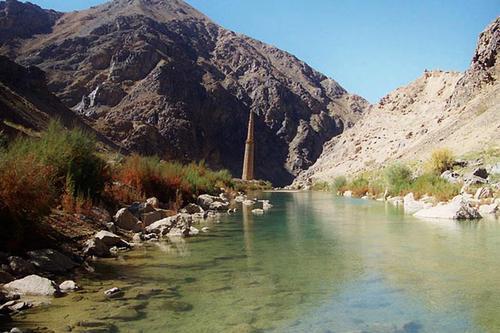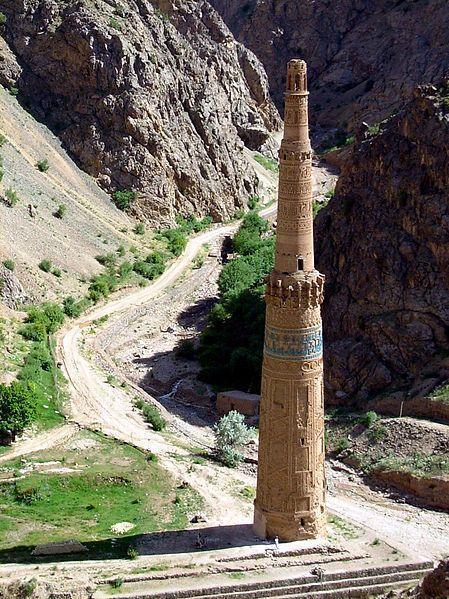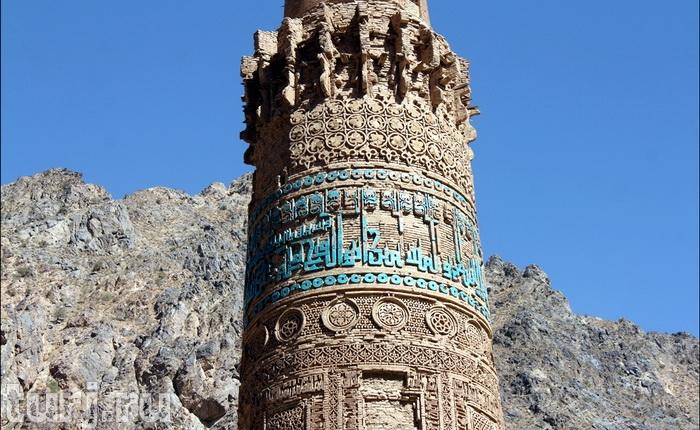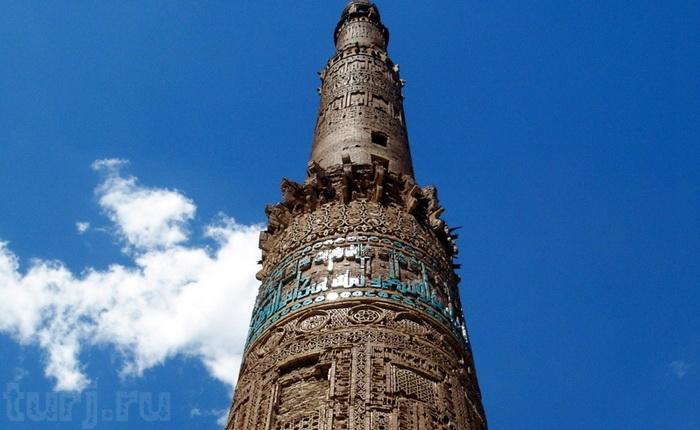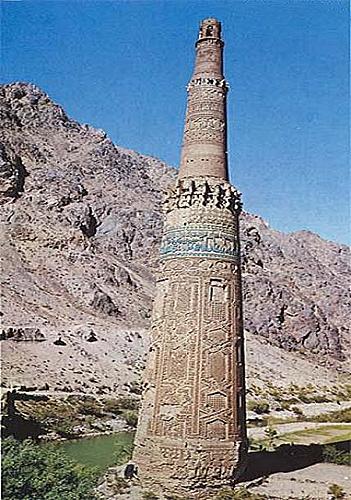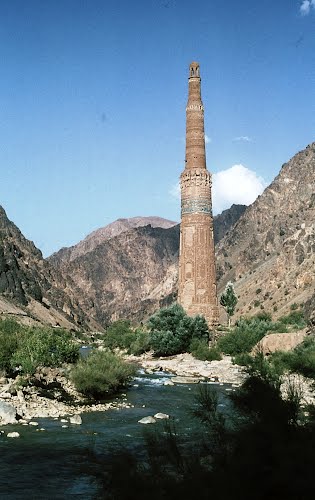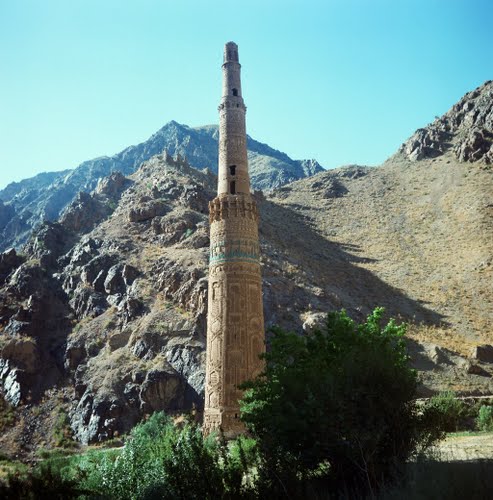The Minaret of Jam is a UNESCO World Heritage Site in western Afghanistan. It is located in a remote and nearly inaccessible region of the Shahrak District, Ghor Province, next to the Hari River. The 62-metre high minaret was built around 1190 entirely of baked bricks and is famous for its intricate brick, stucco and glazed tile decoration, which consists of alternating bands of kufic and naskhi calligraphy, geometric patterns, and verses from the Qur'an. As of 2013 the minaret remained on the list of World Heritage in Danger, under serious threat of erosion, and was not actively being preserved. In 2014 the BBC reported that the tower was in imminent danger of collapse.
Site
The circular minaret rests on an octagonal base, it had 2 wooden balconies and was topped by a lantern. It is formal presentation has a striking similarity to the minaret built by Masud III in Ghazni. It is thought to have been a direct inspiration for the Qutub Minar in Delhi, India, which was also built by the Ghurid Dynasty. After the Qutub Minar, the Minaret of Jam is the second-tallest brick minaret in the world.
The Minaret of Jam belongs to a group of around 60 minarets and towers built between the 11th and the 13th centuries in Central Asia, Iran and Afghanistan, including the Kutlug Timur Minaret in Old Urgench to the tower at Ghazni. The minarets are thought to have been built as symbols of Islam's victory, while other towers were simply landmarks or watchtowers.
The archaeological landscape around Jam also includes the ruins of a 'palace', fortifications, a pottery kiln and a Jewish cemetery, and has been suggested to be the remains of the lost city of Turquoise Mountain.
The archaeological site of Jam was successfully nominated as Afghanistan's first World Heritage site in 2002. It was also inscribed in UNESCO's list of World Heritage in Danger, due to the precarious state of preservation of the minaret, and results of looting at the site.
History
The Minaret of Jam is probably located at the site of the Ghurid Dynasty's capital, Firozkoh. During the 12th and 13th century, the Ghurids controlled what is now Afghanistan, but also parts of eastern Iran, Northern India and parts of Pakistan.
The Arabic inscription dating the minaret is unclear - it could read 1193/4 or 1174/5. It could thus commemorate the victory of the Ghurid sultan Ghiyas ud-Din over the Ghaznevids in 1186 in Lahore. However, Dr. Ralph Pinder-Wilson, a British Archeologist and Director of the British Institute of Afghan Studies in the 1970s wrote a major study of the Minarets of Jam and Ghazni and believed that the minaret was built to commemorate the victory of Mu'izz ad-Din, Ghiyath ud-Din's brother, over Prithviraj Chauhan which allowed for the spreading of Islam. Pinder-Wilson's believed that the minaret was built in the style of the time which included a tradition of early Islamic victory towers proclaiming the conquering power of Islam.
It is assumed that the Minaret was attached to the Friday Mosque of Firozkoh, which the Ghurid chronicler Abu 'Ubayd al-Juzjani states was washed away in a flash-flood, some time before the Mongol sieges in the early 13th century. Work at Jam by the Minaret of Jam Archaeological Project, has found evidence of a large courtyard building beside the minaret, and evidence of river sediments on top of the baked-brick paving.
The Ghurid Empire's glory waned after the death of Ghiyath ud-Din in 1202, as it was forced to cede territory to the Khwarezm Empire. Juzjani states that Firuzkuh was destroyed by the Mongols in 1222.

